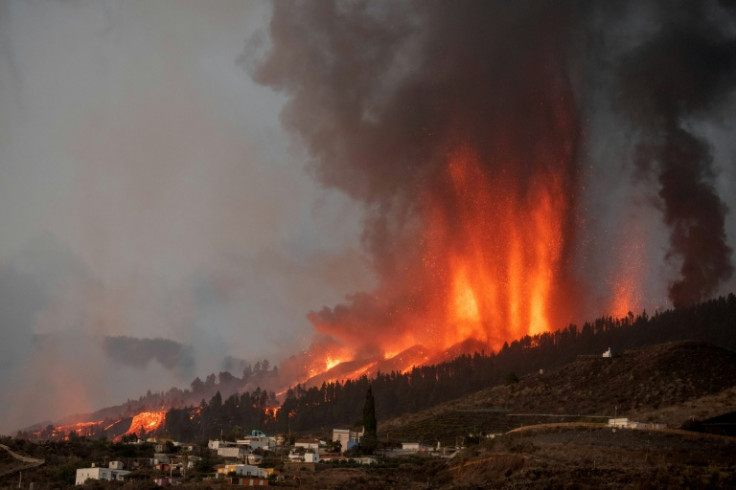Red-Hot Lava Spills Out As Hawaii's Kilauea Volcano Erupts Again [Watch]
KEY POINTS
- A glow was detected inside the Halemaumau crater at Kilauea's summit
- The volcano alert level has been raised from "watch" to "warning"
- Officials said there is no threat to local communities
Hawaii's Kilauea, one of the world's most active volcanos, began erupting Thursday. The U.S. Geological Survey said a glow was detected inside the Halemaumau crater at its summit on Big Island.
After the Hawaiian Volcano Observatory's webcam spotted the fiery glow inside the crater, the volcano's alert level was raised from "watch" to "warning," fearing possible hazards, the USGS said in its advisory. It said the warning was issued after the magma was seen moving below the summit surface which was indicative of a potential eruption.
"The opening phases of eruptions are dynamic. Webcam imagery shows fissures at the base of Halemaumau crater generating lava flows on the surface of the crater floor," the USGS said. "The activity is confined to Halemaumau and the hazards will be reassessed as the eruption progresses."
Videos and photos that surfaced on Twitter showed red-hot lava flowing from the crater as a column of smoke billowed up into the sky.
Webcam view (KWcam) -- fissure opened within Halemaʻumaʻu crater in Kīlauea’s summit caldera at about 4:34 PM HST on January 5, 2023. pic.twitter.com/Nem3eVODRz
— USGS Volcanoes🌋 (@USGSVolcanoes) January 6, 2023
New footage shows latest eruption — Kilauea volcano began erupting again after a month break (video: NPS / Janice Wei) @KITV4 pic.twitter.com/2ooa9tl5Hz
— Tom George (@TheTomGeorge) January 6, 2023
Kilauea summit is inside Hawaii Volcanoes National Park and is away from residential communities. The Hawaii Emergency Management Agency said the eruption did not pose an immediate threat to nearby areas as it was confined to the crater.
Kilauea has been erupting often since 1983. In 2018, an eruptive activity in the volcano's lower East Rift Zone from May through August destroyed as many as 700 homes and other buildings in its vicinity.
In November last year, both Kilauea and Mauna Loa started spewing magma, with the latter erupting for the first time in 38 years, drawing curious visitors to the incandescent spectacle. Hawaiians consider lava eruptions as a sign that Pele, the Polynesian goddess of fire, is blessing the land. Lava from Mauna Loa at the time reached just 3.2 miles from a major highway, which connects the east and west sides of the island.
Kilauea and Mauna Loa volcanos stopped erupting in December.

© Copyright IBTimes 2024. All rights reserved.






















